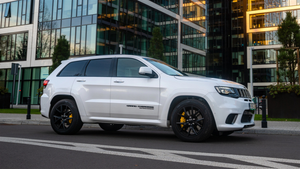
In a groundbreaking strategic realignment within the artificial intelligence (AI) landscape, Microsoft (NASDAQ: MSFT), Nvidia (NASDAQ: NVDA), and Anthropic have unveiled a sweeping collaboration set to accelerate AI development, broaden access to advanced models, and deepen technological integration across the industry. Announced on November 18, 2025, these partnerships signify a monumental investment in Anthropic's Claude AI models, leveraging Microsoft's Azure cloud infrastructure and Nvidia's cutting-edge GPU technology. This alliance not only injects massive capital and compute resources into Anthropic but also signals a strategic diversification for Microsoft and a further entrenchment of Nvidia's hardware dominance, poised to intensify the already fierce competition in the generative AI space.
Unprecedented Technical Synergy and Compute Power Unlocked
The core of this collaboration revolves around enabling Anthropic to scale its frontier Claude AI models on Microsoft Azure's infrastructure, powered by Nvidia's leading-edge GPUs. Anthropic has committed to purchasing an astounding $30 billion worth of compute capacity from Microsoft Azure over several years, with the potential to contract additional capacity up to one gigawatt. This massive investment underscores the immense computational requirements for training and deploying next-generation frontier models. The infrastructure will initially leverage Nvidia's state-of-the-art Grace Blackwell and future Vera Rubin systems, ensuring Claude's development and operation benefit from cutting-edge hardware.
For the first time, Nvidia and Anthropic are establishing a "deep technology partnership" focused on collaborative design and engineering. The goal is to optimize Anthropic's models for superior performance, efficiency, and total cost of ownership (TCO), while also tuning future Nvidia architectures specifically for Anthropic's workloads. Nvidia CEO Jensen Huang anticipates that the Grace Blackwell architecture, with its NVLink technology, will deliver an "order of magnitude speed up," crucial for reducing token economics. This "shift-left" engineering approach means Nvidia's latest technology will be available on Azure immediately upon release, offering enterprises running Claude on Azure distinct performance characteristics.
This collaboration distinguishes itself by moving beyond a "zero-sum narrative" and a "single-model dependency," as emphasized by Microsoft CEO Satya Nadella. While Microsoft maintains a core partnership with OpenAI, this alliance broadens Microsoft's AI offerings and reduces its singular reliance on one AI developer. Furthermore, the deal ensures that Anthropic's Claude models will be the only frontier LLMs available across all three major global cloud services: Microsoft Azure, Amazon Web Services (NASDAQ: AMZN), and Google Cloud (NASDAQ: GOOGL), offering unprecedented flexibility and choice for enterprise customers. Initial reactions from the AI community highlight both the strategic significance of diversified AI strategies and concerns about "circular financing" and a potential "AI bubble" given the colossal investments.
Reshaping the AI Competitive Landscape
This strategic collaboration creates a powerful triumvirate, each benefiting from and contributing to the others' strengths, fundamentally altering the competitive dynamics for AI companies, tech giants, and startups. Anthropic receives direct financial injections of up to $10 billion from Nvidia and $5 billion from Microsoft, alongside guaranteed access to vast computational power, which is currently a scarce resource. This secures its position as a leading frontier AI lab, enabling it to aggressively scale its Claude models and compete directly with rivals.
Microsoft (NASDAQ: MSFT) significantly diversifies its AI strategy beyond its deep investment in OpenAI, reducing reliance on a single LLM provider. This strengthens Azure's position as a premier cloud platform for AI development, offering Anthropic's Claude models to enterprise customers through Azure AI Foundry and integrating Claude across its Copilot family (GitHub Copilot, Microsoft 365 Copilot, and Copilot Studio). This move enhances Azure's competitiveness against Amazon Web Services (NASDAQ: AMZN) and Google Cloud (NASDAQ: GOOGL) and provides a strategic hedge in the rapidly evolving AI market.
Nvidia (NASDAQ: NVDA) reinforces its dominant position as the primary supplier of AI chips. Anthropic's commitment to utilize Nvidia's Grace Blackwell and Vera Rubin systems guarantees substantial demand for its next-generation hardware. The deep technology partnership ensures joint engineering efforts to optimize Anthropic's models for future Nvidia architectures, further entrenching its market leadership in AI infrastructure. For other AI companies and startups, this collaboration intensifies the "AI race," demonstrating the immense capital and compute resources required to compete at the frontier, potentially leading to further consolidation or specialized niches.
The competitive implications for major AI labs are significant. OpenAI, while still a key Microsoft partner, now faces intensified competition from a well-funded and strategically backed rival. Google (NASDAQ: GOOGL) and Amazon (NASDAQ: AMZN), despite hosting Claude on their clouds, see Microsoft secure a massive $30 billion compute commitment, a significant win for Azure in the high-stakes AI cloud infrastructure race. This partnership signals a shift towards multi-model AI strategies, potentially disrupting vendors pushing single-model solutions and accelerating the development of sophisticated AI agents.
Broader Implications and Looming Concerns in the AI Ecosystem
This collaboration between Microsoft (NASDAQ: MSFT), Nvidia (NASDAQ: NVDA), and Anthropic is more than just a business deal; it's a defining moment that underscores several profound trends in the broader AI landscape. It solidifies the trend of diversification in AI partnerships, with Microsoft strategically expanding its alliances beyond OpenAI to offer enterprise customers a wider array of choices. This move intensifies competition in generative AI, with Anthropic now powerfully positioned against its rivals. The deep technical collaboration between Nvidia and Anthropic highlights the escalating importance of hardware-software integration for achieving peak AI performance and efficiency, critical for pushing the boundaries of what AI can do.
The massive compute capacity commitment by Anthropic to Azure, coupled with the substantial investments, highlights the ongoing race among cloud providers to build and offer robust infrastructure for training and deploying advanced AI models. This also signals a growing trend for AI startups to adopt a multi-cloud strategy, diversifying their compute resources to ensure access to sufficient capacity in a high-demand environment. Nvidia CEO Jensen Huang's praise for Anthropic's Model Context Protocol (MCP) as having "revolutionized the agentic AI landscape" indicates a growing industry focus on AI systems capable of performing complex tasks autonomously.
However, this unprecedented scale of investment also raises several concerns. The combined $45 billion deal, including Anthropic's $30 billion compute commitment and the $15 billion in investments, fuels discussions about a potential "AI bubble" and the long-term profitability of such colossal expenditures. Critics also point to "circular financing," where major tech companies invest in AI startups who then use that capital to purchase services from the investors, creating a potentially interdependent financial cycle. While promoting competition, such large-scale collaborations could also lead to increased concentration of power and resources within a few dominant players in the AI space. The commitment to utilize up to one gigawatt of compute capacity further highlights the immense energy demands of advanced AI infrastructure, raising environmental and logistical concerns regarding energy consumption and cooling.
The Horizon: AI's Next Frontier and Unforeseen Challenges
The collaboration between Microsoft (NASDAQ: MSFT), Nvidia (NASDAQ: NVDA), and Anthropic is poised to usher in a new era of AI development, with both near-term and long-term implications. In the near term, Anthropic's Claude AI models, including Claude Sonnet 4.5, Claude Opus 4.1, and Claude Haiku 4.5, will be scaled and broadly available on Microsoft Azure, immediately expanding their reach to enterprise customers. The deep technical partnership between Nvidia and Anthropic will swiftly focus on optimizing these models for enhanced performance, efficiency, and total cost of ownership (TCO), leveraging Nvidia's Grace Blackwell and Vera Rubin systems. Furthermore, Microsoft's commitment to integrating Claude across its Copilot family will immediately boost the capabilities of tools like GitHub Copilot and Microsoft 365 Copilot.
Looking further ahead, the ongoing technical collaboration between Nvidia and Anthropic is expected to lead to increasingly powerful and efficient Claude models, driven by continuous optimizations for future Nvidia hardware architectures. This synergy promises to accelerate AI model development, pushing the boundaries of what these systems can achieve. Experts like Nvidia CEO Jensen Huang anticipate an "order-of-magnitude performance gain" for Anthropic's frontier models, potentially revolutionizing cost and speed in AI and bringing Claude's capabilities to "every enterprise, every industry around the world." The partnership is also expected to foster advancements in AI safety, given Anthropic's foundational emphasis on ethical AI development.
Potential applications span enhanced enterprise solutions, with businesses leveraging Azure AI Foundry gaining access to Claude for complex reasoning, content generation, and data analysis. The integration into Microsoft Copilot will lead to more sophisticated AI agents and boosted productivity across various business functions. However, significant challenges remain. Concerns about an "AI bubble" persist, with some experts cautioning against "elements of irrationality" in the current investment cycle. The intense competition, coupled with the complex technical integration and optimization required between Anthropic's models and Nvidia's hardware, will demand continuous innovation. Moreover, the massive infrastructure demands, including the need for up to one gigawatt of compute capacity, raise environmental and logistical concerns regarding energy consumption and cooling.
A New Chapter in AI History: Consolidation, Competition, and Uncharted Territory
The strategic alliance between Microsoft (NASDAQ: MSFT), Nvidia (NASDAQ: NVDA), and Anthropic represents a pivotal moment in AI history, marking a new chapter characterized by unprecedented levels of investment, strategic diversification, and deep technological integration. The key takeaways from this collaboration are clear: Anthropic secures vital compute resources and capital, ensuring its competitive standing; Microsoft diversifies its AI portfolio beyond OpenAI, bolstering Azure's position as a leading AI cloud; and Nvidia solidifies its indispensable role as the foundational hardware provider for cutting-edge AI.
This development signifies a shift towards a more dynamic and multi-faceted AI ecosystem, where major players strategically back multiple frontier AI developers. It underscores the insatiable demand for computational power, driving hyperscalers and model developers into increasingly intertwined relationships. The deep technical partnership between Nvidia and Anthropic for co-optimization of models and architectures highlights a growing trend towards highly specialized hardware-software synergy, crucial for maximizing AI performance and efficiency. While promising accelerated enterprise AI adoption and broader access to advanced models, the collaboration also brings to the forefront concerns about "circular financing" and the potential for an "AI bubble," given the colossal sums involved.
In the coming weeks and months, the industry will be closely watching the practical implementation and performance of Claude models on Microsoft Azure AI Foundry, particularly Claude Sonnet 4.5, Claude Opus 4.1, and Claude Haiku 4.5. The technical progress resulting from the Nvidia-Anthropic joint engineering efforts will be a critical indicator of future advancements in AI capabilities and efficiency. Furthermore, observing how this deepened partnership with Anthropic influences Microsoft's ongoing relationship with OpenAI will provide insights into the evolving competitive landscape. Finally, the broader market sentiment regarding AI valuations and the long-term sustainability of these massive investments will continue to be a key area of focus as the AI revolution accelerates.
This content is intended for informational purposes only and represents analysis of current AI developments.
TokenRing AI delivers enterprise-grade solutions for multi-agent AI workflow orchestration, AI-powered development tools, and seamless remote collaboration platforms.
For more information, visit https://www.tokenring.ai/.





